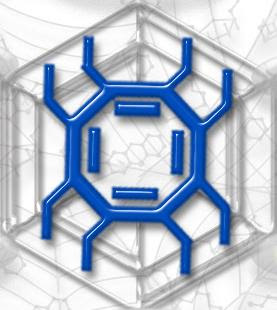I've just returned from the
Biennial Conference on Chemical Education 2008.
I wasn't able to record my first talk on Communicating Results from Undergraduate Research because my computer crashed. However, I repeated many of the same concepts in my second talk on
Open Notebook Science and Cheminformatics.
It was very fortunate that the BCCE was held in Bloomington at Indiana University this year because it was a great opportunity for me to meet up with
Rajarshi Guha,
David Wild and
Amar Flood.
Amar and I discussed
Open Notebook Science with his lab people and it may make sense to do this for some of their projects. We set up a
wiki to explore that possibility.
Rajarshi and I discussed at length our collaboration on the
prediction of Ugi precipitates and
docking against falcipain-2. It is certainly easier to pour over the relevant papers and online documents when face to face.
These are the outcomes:
1) We're going to separate the problem of predicting the solubility of Ugi products from the problem of generating the best enzyme inhibitors. Our
initial plan was to try to make the top ranked Ugi products for a given enzyme and hope that we generate enough precipitates from those results for Rajarshi to model. We're just not getting enough positive results that way to generate a reliable model in a reasonable amount of time. To stack the deck in our favor we're going to start with a well behaved Ugi reaction (
EXP099) and modify the reagents one at a time.
2) We're going to separate the performance of the Ugi reaction from the solubility of Ugi products in various solvents. Once we have Ugi products in hand in pure form from a reaction in methanol we will simply measure their solubility in other solvents, starting with ethanol, acetonitrile, THF and toluene. Low solubility will not guarantee that the Ugi reaction will proceed smoothly to produce a precipitate when carried out in a given solvent but it will certainly be a great starting point.
3) We're going to actually measure the solubility instead of just noting soluble or insoluble, as we have been doing in our
Ugi master table. This will make it much easier for Rajarshi to come up with a robust model. Kevin Owens is already set up with a
SpeedVac in his lab and that will help immensely. Rajarshi made the point that models predicting solubility in
non-aqueous systems are needed and could be quite helpful to the chemistry community. He will be using the
crystallographic data of our precipitates in his calculations. More on this later...
4) We're going to require the reactions to be easily amenable to
automation, even if we can carry them out manually sometimes. For example,
some of the reactions had starting materials that were not very soluble in methanol by themselves, even though they went into solution when combined with the other starting materials and then generated a product. This is interesting behavior but extremely inconvenient for automation because we can't make up stock solutions of reagents at 2M concentration in methanol.
5) We're going to require the reactions to be fast. Some reactions required
several days to complete. These will now be considered to be negative for precipitation at the 16 hour mark.

Labels: BCCE, cheminformatics, open notebook science, open science, Ugi reaction









